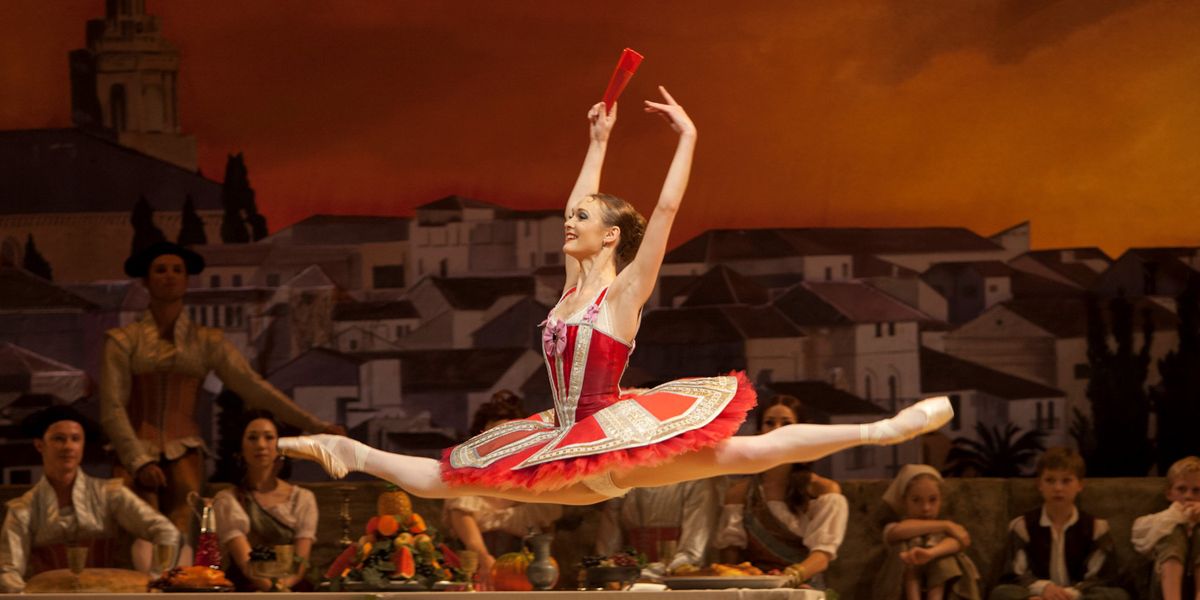Jurgita Dronina on Making the Role of "Kitri" Her Own
When Jurgita Dronina first danced Kitri for a guest performance of Don Quixote with Teatro Filarmonico-Fondazione Arena Di Verona, she was in essence cast against type. “Before Kitri, I was dancing only lyrical or dramatic roles, so I had to start from scratch in finding my own signature in the steps and my own interpretation of the character,” says Dronina, who was dancing with Royal Swedish Ballet at the time.
Jan-Erik Wikström, her coach and colleague at RSB, helped her dig deep into the role. From Wikström she learned that a flashier character like Kitri doesn’t have to drift into cliché. She used the feisty choreography to begin discovering the bravura side of herself, while maintaining her expressive elegance. “Jan-Erik allowed me to experiment with port de bras and transitions,” says Dronina. “The biggest liberty I have taken is the movement of the fan and port de bras—there are so many ways to use a fan. Those movements of the head and upper body must define the character, since the steps must follow the choreography and staging.”
 Jurgita Dronina with Isaac Hernandez in Alexei Ratmansky’s “Don Quixote” with Dutch National Ballet. Photo Courtesy National Ballet of Canada.
Jurgita Dronina with Isaac Hernandez in Alexei Ratmansky’s “Don Quixote” with Dutch National Ballet. Photo Courtesy National Ballet of Canada.
Playing with the phrasing also helped Dronina make her mark. “There are still plenty of places to be lyrical and soft,” she says, “to contrast the other parts that are very quick and on fire. I like to play with those differences, as well as try to find the right balance between humor and charm in her character.” Little did she know that developing her Kitri would alter the trajectory of her career: After a guest performance in Alexei Ratmansky’s Don Quixote with Dutch National Ballet, Dronina was invited to join the company, a move that eventually led her to become a principal at the National Ballet of Canada.





